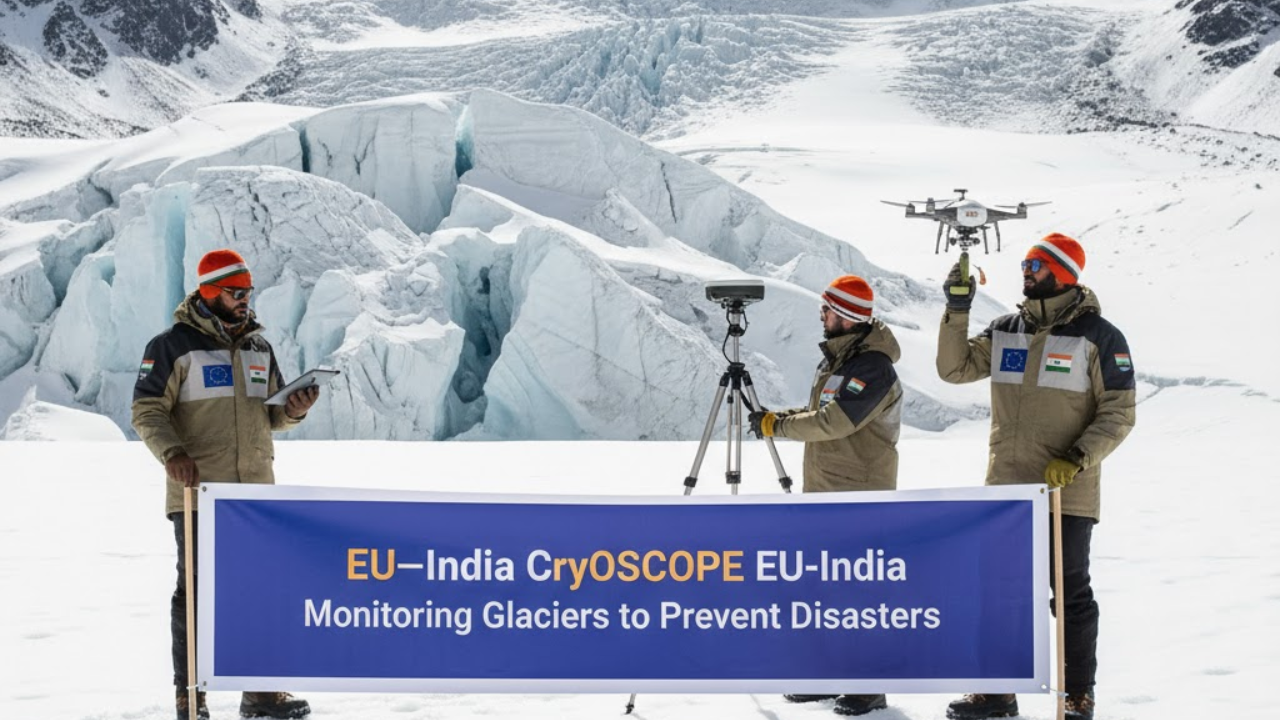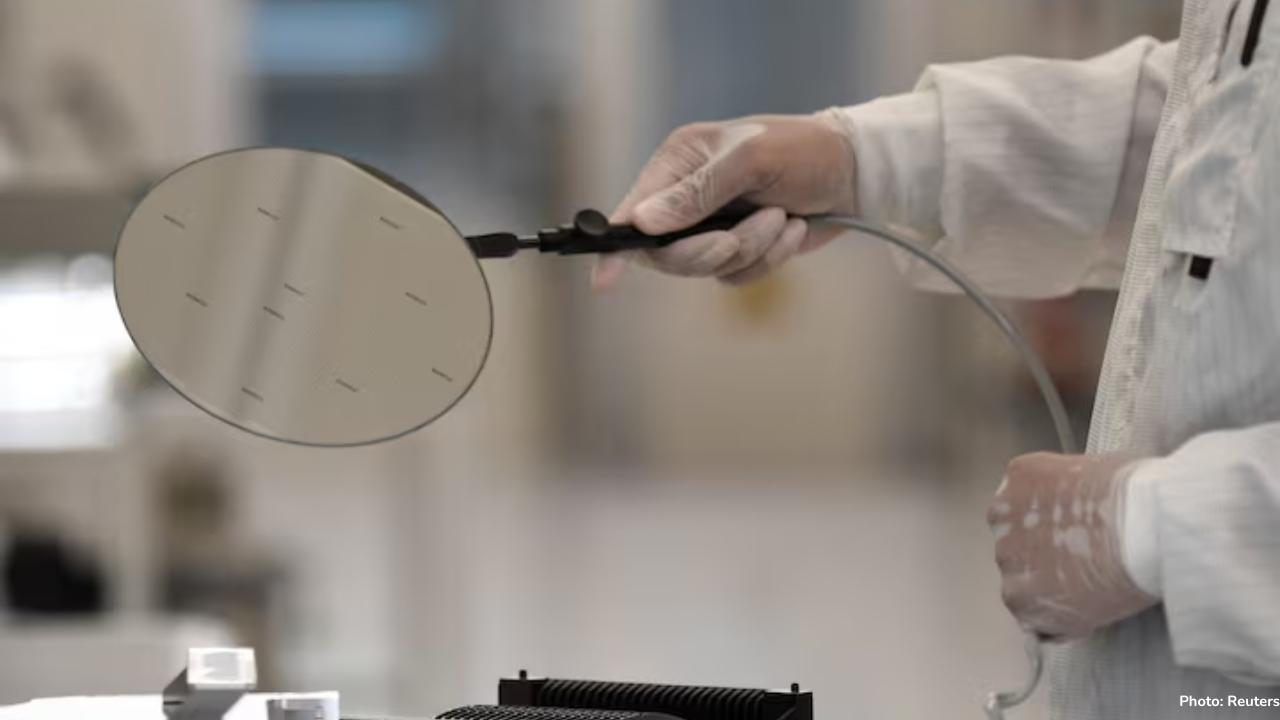
Post by : Naveen Mittal
The Himalayas, often called the “Third Pole,” hold the world’s largest ice reserves outside the Arctic and Antarctica. These glaciers feed the rivers that sustain nearly two billion people across Asia. But they are melting—fast.
Now, a new international initiative is stepping up to monitor and protect them: CryoSCOPE, a joint India–European Union project combining artificial intelligence, satellite imaging, and field sensors to forecast and prevent glacial disasters.
The mission is simple but urgent—predict, prepare, and protect.
Himalayan glaciers are melting at nearly double the rate they were two decades ago. The retreating ice is creating unstable glacial lakes that can burst without warning, triggering devastating floods downstream—known as Glacial Lake Outburst Floods (GLOFs).
Events like the Sikkim flash flood in 2023 and repeated disasters in Uttarakhand have revealed a harsh truth: even with warnings, early detection systems aren’t keeping pace with climate acceleration.
CryoSCOPE aims to bridge that gap—by building a digital nervous system for the Himalayas.
CryoSCOPE deploys a combination of AI models, satellite data, and ground-based sensors to monitor glaciers and lakes in real time.
Ground Sensors: Installed in Ladakh and Uttarakhand, these devices measure snow depth, meltwater flow, sediment, and temperature.
AI and Data Modeling: Machine-learning systems process the incoming data to predict glacier behavior, lake expansion, and potential breach risks.
Satellite Integration: Space imagery tracks ice retreat, surface cracks, and hydrological shifts, helping verify on-ground readings.
Community Linkages: Local authorities receive automatic alerts when thresholds for potential flooding are crossed, giving them valuable response time.
Together, these technologies aim to forecast disasters hours or even days in advance, giving communities the crucial time needed to evacuate or activate defense mechanisms.
The Himalayas are home to thousands of glacial lakes, many of them perched above populated valleys. A single breach can release millions of cubic meters of water and debris within minutes—destroying roads, power plants, farms, and villages.
Every year, such floods claim lives and wipe out decades of development in moments. With climate change accelerating glacier melt, the risk is multiplying.
CryoSCOPE’s mission, therefore, goes beyond scientific curiosity—it’s a humanitarian and developmental necessity.
Implementing a program like CryoSCOPE is far from easy. The terrain is rugged, communication networks are sparse, and maintaining instruments in freezing, high-altitude conditions is a logistical challenge.
Moreover, glacial systems are complex and unpredictable. Their dynamics depend on multiple factors—temperature, precipitation, topography, dust deposition, and even air pollution. Building AI models that account for all these variables requires immense computational power and continuous calibration.
But both India and the EU believe that innovation must match the scale of the crisis.
CryoSCOPE is not just a research initiative—it’s a symbol of how international collaboration can tackle planetary challenges. By combining India’s on-ground expertise in Himalayan studies with Europe’s advanced satellite technology and AI modeling, the project bridges knowledge and geography.
Data from India’s mountains will also contribute to global climate models, helping scientists understand how glacier melt impacts downstream water systems and monsoon patterns.
This shared data ecosystem could later expand to the Alps, the Arctic, and the Andes—creating a planetary cryosphere monitoring network that transcends borders.
Early warning systems are only one part of the solution. True climate resilience in the Himalayas will depend on:
Integrating local communities into the warning and response chain.
Educating vulnerable populations about evacuation protocols.
Developing infrastructure that can withstand flash floods.
Investing in nature-based solutions, such as wetland restoration and reforestation, to absorb excess floodwater.
The combination of science, governance, and community participation will define how well India and its neighbors adapt to a rapidly warming mountain system.
If CryoSCOPE succeeds, India could soon have a real-time Himalayan hazard forecasting system, predicting glacier behavior like meteorologists predict storms.
Such foresight could save thousands of lives, safeguard billions in infrastructure, and redefine how developing countries manage climate risks.
In an age of melting peaks and rising waters, projects like CryoSCOPE represent not just technological progress—but hope.
Disclaimer:
This article is for informational and educational purposes only. The CryoSCOPE project and associated research are ongoing. Readers are advised to refer to verified scientific publications and official environmental reports for the latest updates on Himalayan glacier monitoring and climate adaptation programs.
Himalayan glaciers, CryoSCOPE, glacial floods, GLOF, climate change, early warning, India-EU collaboration, cryosphere, climate resilience










Lazio Denies Qatari Sale Rumors, Files Legal Complaints
Lazio refutes online claims of Qatari takeover talks, files reports with Italian regulators and judi

Penn State Fires Coach Franklin After Third Straight Loss
Penn State parts ways with James Franklin after 3 conference defeats, naming Terry Smith as interim

Denmark Beats Greece 3-1 to Stay Top in Qualifiers
Denmark wins 3-1 at home over Greece, keeps unbeaten record, and stays ahead of Scotland in Group C

Panthers Edge Cowboys 30-27 with Dowdle’s Big Game
Rico Dowdle dominates former team with 239 total yards as Panthers win 30-27 over Cowboys by last-se

Mariners Beat Blue Jays 3-1 to Win ALCS Game 1
Seattle shuts down Toronto’s bats and wins Game 1 of the ALCS 3-1, with strong pitching and timely h

Dutch Government Seizes Control of China-Owned Chipmaker Nexperia
The Netherlands government steps in over governance risks at Nexperia, suspends its Chinese parent’s